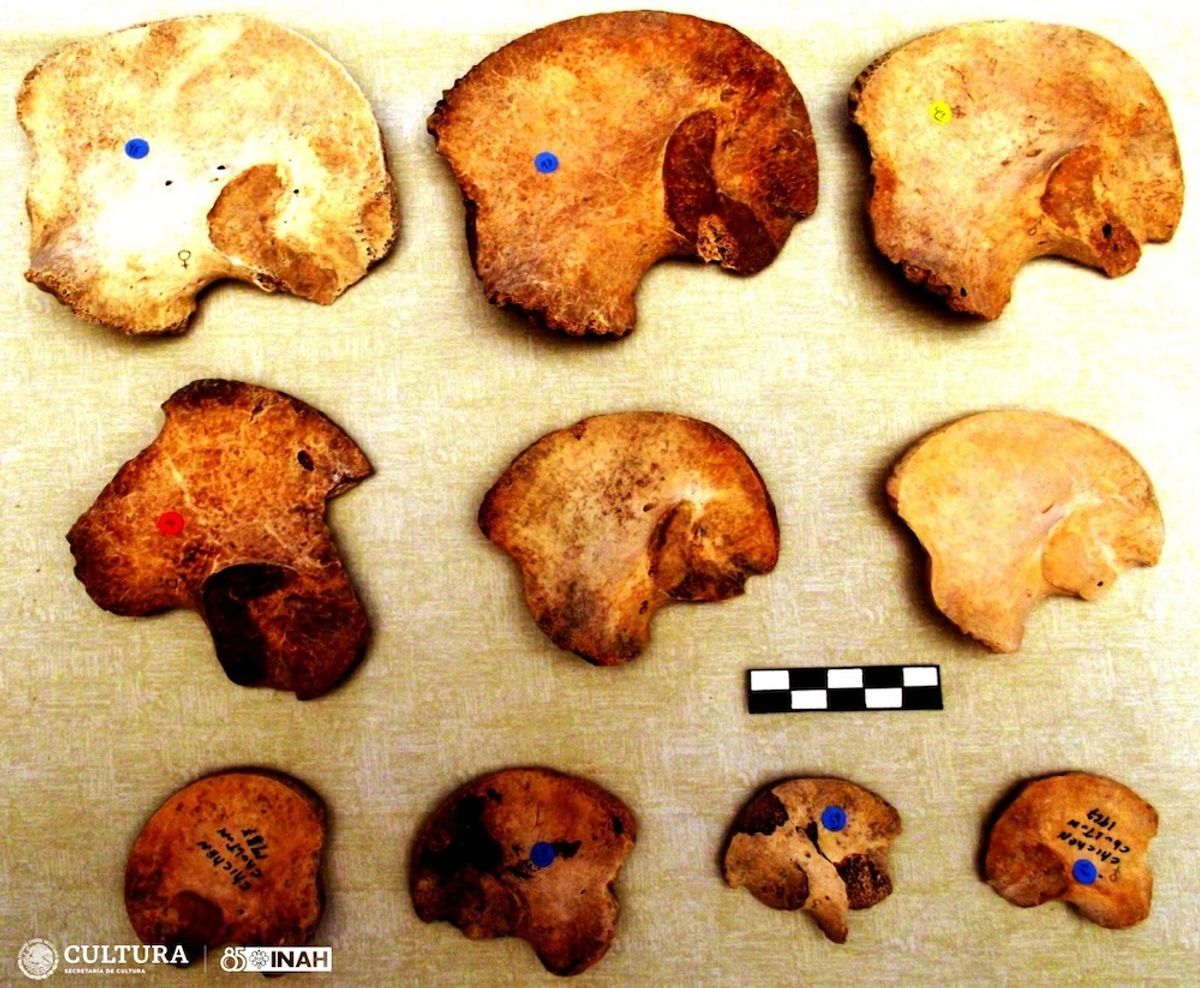The ancient Maya city of Chichén Itzá in modern-day Mexico is inextricable in popular imagination from the spectre of human sacrifice. Thanks to lurid 16th-century accounts from Spanish conquistadors, Chichén Itzá is known for the bodies found in the city’s sacred cenote, presumed by colonising forces to belong to young women and girls. However, according to a new study published in Nature, the ancient Maya weren’t sacrificing girls—they were sacrificing boys.
An in-depth genetic investigation of the ritualistically interred children’s remains in Chichén Itzá’s chultún, or water cistern, revealed that all 64 children that had gone to their watery demise in the 200-year period at the height of Chichén Itzá’s influence were male and between three and six years of age. Nearly a quarter were related to each other.
“There were two big moments of surprise here,” lead study author Rodrigo Barquera, a researcher in the department of archaeogenetics at the Max Planck Institute for Evolutionary Anthropology (MPI-EVA) in Leipzig, Germany, told CNN.
“We were thinking, influenced by traditional archaeology that we would find a non-sex-biased burial or mostly girls,” he said. “And the second one (was) when we found out that some of them were related and there were two sets of twins.”
According to the sacred K’iche’ Maya Book of Council, twin sacrifice was central to much of the Maya belief system. The Popol Vuh, the Maya foundational sacred narrative, details the tale of hero twins Hunahpu and Xbalanque, the latter of whom avenged his father and slain brother through cycles of sacrifice and resurrection.
The new scientific evidence flies in the face of long-held assumptions about how ancient Maya society functioned. “Early 20th century accounts falsely popularised lurid tales of young women and girls being sacrificed at the site,” Christina Warinner, an author of the study, associate professor of social sciences and anthropology at Harvard University and group leader at the MPI-EVA, told Courthouse News. “This study, conducted as a close international collaboration, turns that story on its head and reveals the deep connections between ritual sacrifice and the cycles of human death and rebirth described in sacred Maya texts.”
Because it is impossible to determine the sex of a skeleton through bone analysis alone, the genetic testing performed is an invaluable step in unlocking the misunderstood legacy of the Maya civilisation.
“We’re getting better and better at retrieving even very small amounts of DNA. And suddenly, we now have the ability to do these large-scale genomic studies and apply ancient DNA as a tool to help us understand the past in Mesoamerica,” Warinner told CNN.
The study also involved researchers collaborating with local residents of the Tixcacaltyub community by allowing the research team to test their DNA. This helped the researchers identify the myriad ways that colonial-era epidemics, like the 1545 cocoliztli outbreak that killed nearly 90% of the 16th-century inhabitants of what is now Mexico, impacted the post-Maya population. The team found evidence of genetic salmonella immunisation—the pathogen salmonella enterica paratyphi C spurred the 1545 epidemic.
Rodrigo Barquera, the study's lead author and an immunogeneticist at the MPI-EVA, looks forward to broader inquiry on the subjects of Maya child sacrifice and the historical consequences of widespread plague.
“I wish to see if there are other chultúnes that have the same characteristics, or if they differ to the one in Chichén Itzá,” Barquera told Courthouse News. “I hope new research in other regions of Mesoamerica and Latin America replicate our findings on the role of Salmonella enterica in the development of the genetic makeup of present-day Maya, Mexicans and Latin Americans in general. [...] And I would be so happy to see a collective effort to help answer one of the questions posed by the community: how far away from Chichén Itzá can we still detect the genetic signature of its ancient inhabitants in modern Maya?”
María Ermila Moo-Mezeta, a Mayan co-author of the study and professor at the Autonomous University of Yucatán, said the new analysis has great Indigenous significance in preserving the “historical memory of the Mayan people”.
She added: “This study is decisively new; a starting point for further, more specific inquiries about the convoluted trajectory of the Maya.”


